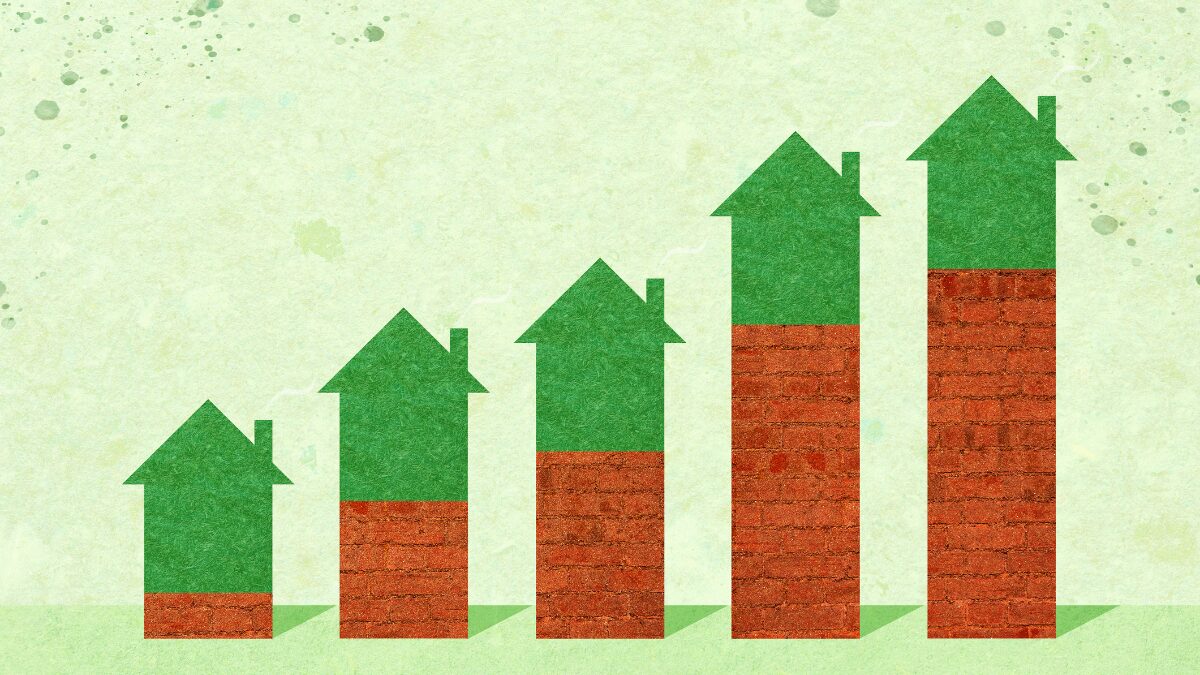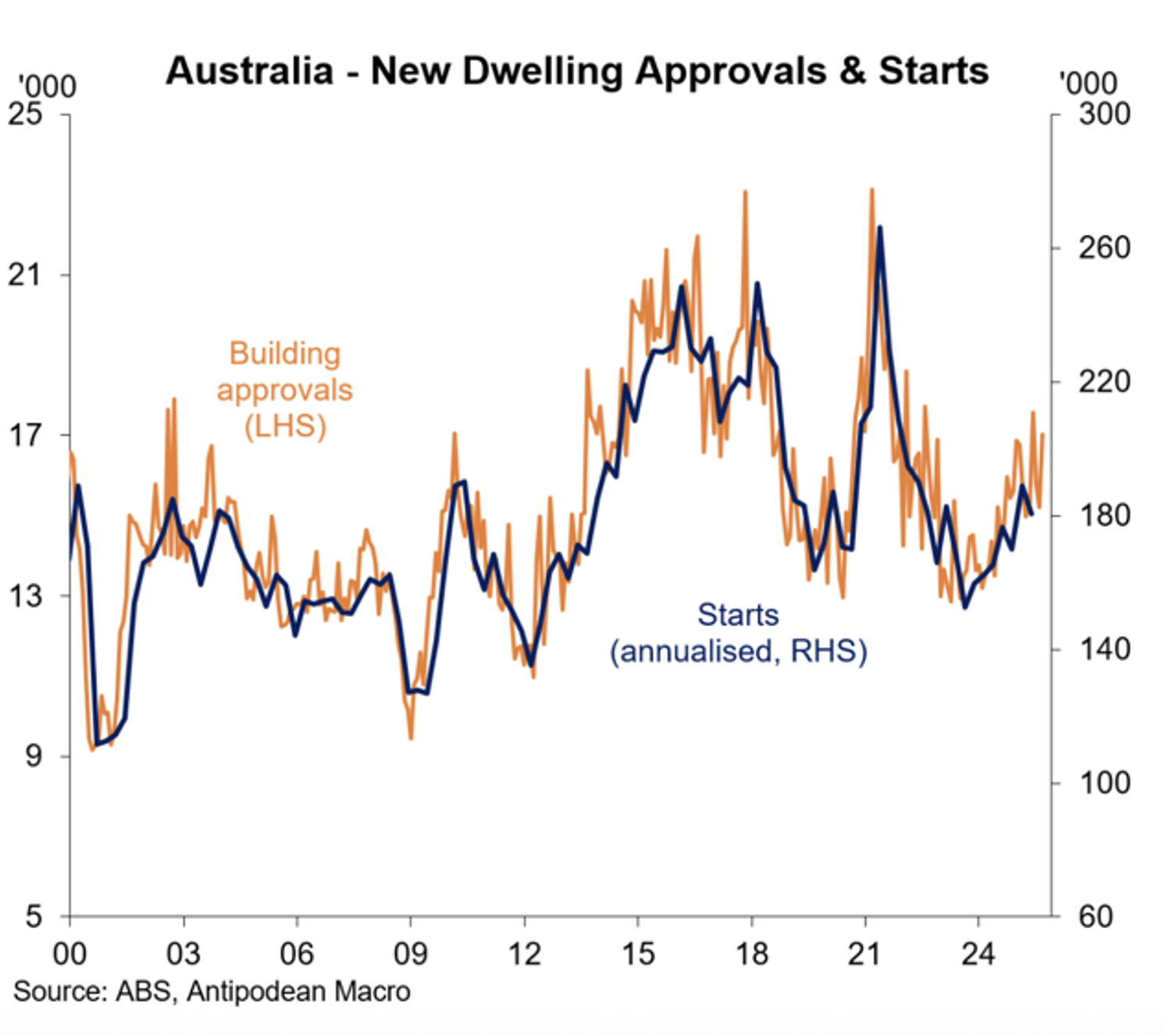The past month has seen more signs of an economic upturn. While still in the early stages, there is a growing list of economic indicators pointing to stronger growth in consumer spending and sentiment, dwelling construction, business confidence and exports.
These more favourable trends have been positively influenced by falling inflation and solid wages growth which have boosted consumer purchasing power, encouraged a lift in the housing sector and helped broader business conditions. The interest rate cutting cycle from the RBA, which began in February 2025, is starting to have a positive impact.
On 12 August, the RBA delivered the third interest rate cut in the cycle, taking the cash rate down to 3.60 per cent. In cutting rates, the RBA expressed strong confidence that inflation was likely to be anchored at the mid-point of the target band and that the economy needed more policy stimulus to reinforce the upturn. The more favourable economic outlook is predicated on further interest rate reductions over the next 6 to 12 months.
There has been no material change to global economic conditions, with most central banks moving to lower interest rates albeit less rapidly than a year ago, the tariff disruptions continuing and a highly uncertain geopolitical framework.
Key data
Below is an update of key trends in the economy:
- Annual inflation fell to 2.1 per cent in June quarter, while the trimmed mean or underlying rate fell to 2.7 per cent. Both measures are now entrenched in the RBA’s target band which has fed into the monetary policy easing cycle. The prior economic weakness, including the on-going moderate wages momentum have contributed to the improved inflation outcomes (Figure 1).
- Household spending rose a solid 0.7 per cent in real terms in the June quarter, after rising 0.5 per cent in the March quarter and 1.4 per cent in the December quarter 2024. In nominal monthly terms, household spending is up a solid 4.8 per cent over the year to June. There is a clear uptrend emerging in household spending, which is being driven by rising real wages, a positive wealth effect (ASX and house prices are at record highs) and interest rate cuts (Figure 2).
- The Westpac – Melbourne Institute Index of consumer sentiment has received a boost from lower interest rates, low inflation and rising real wages. It was the highest reading for consumers in three and a half years. The optimism was broadly based with strong increases in the measures for ‘family finances’, ‘economic conditions’ and ‘time to buy a major household item’. There is a solid link between consumer sentiment and spending – the rise in sentiment is a favourable sign for a further lift in spending (Figure 3).
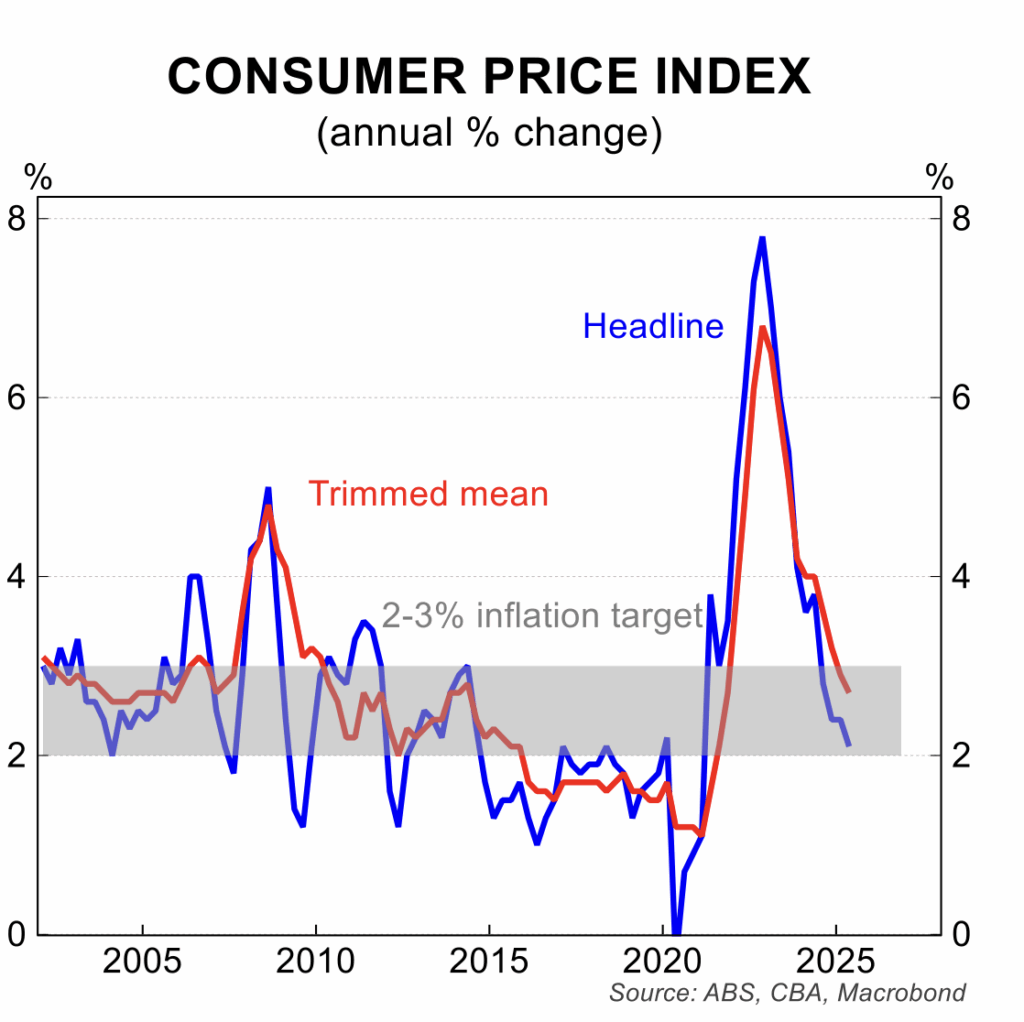
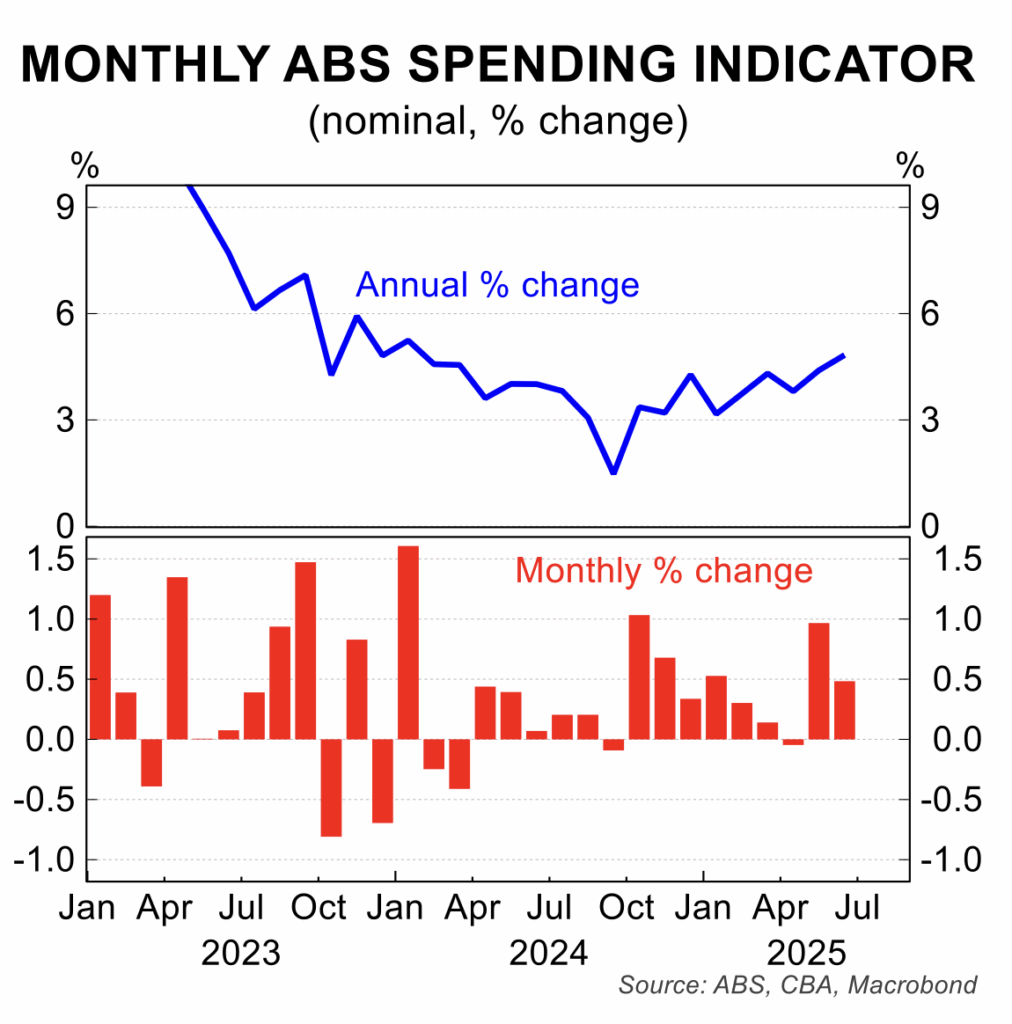
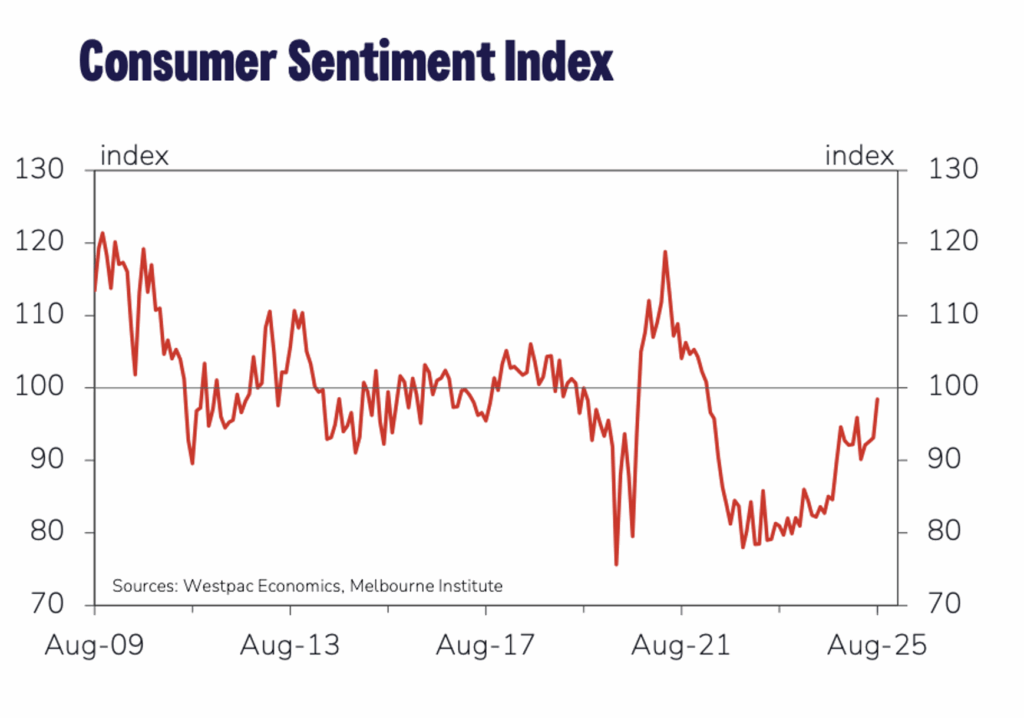
- On a monthly basis, the level of new dwelling building approvals is extremely volatile. That said, there is a clear uptrend in the number of dwelling approvals which are over 30 per cent higher than in early 2024. In June, new approvals were running at an annualised rate of 205,000 (Figure 4).
- There has been a clear softening the labour market since the start of 2025. In the last three months, employment has increased by a total of just 22,000 people, the weakest three monthly increase since the COVID pandemic. This weakness has seen the unemployment rate rise from 4.0 per cent at the start of the year to 4.25 per cent in July (Figure 5).
- Wages growth remains moderate, with the Wage Price Index rising 0.8 per cent in the June quarter for an annual increase of 3.4 per cent. After a post-COVID jump in wages, from historically low growth, annual wages growth is settling around 3 to 3.5 per cent, a pace that is consistent with the RBA’s inflation target (Figure 6).
- The NAB survey of business confidence and conditions confirmed a more positive tone in the business sector. An easing in business input costs, more favourable trading conditions and the effect of lower interest rates are positive influences (Figure 7).
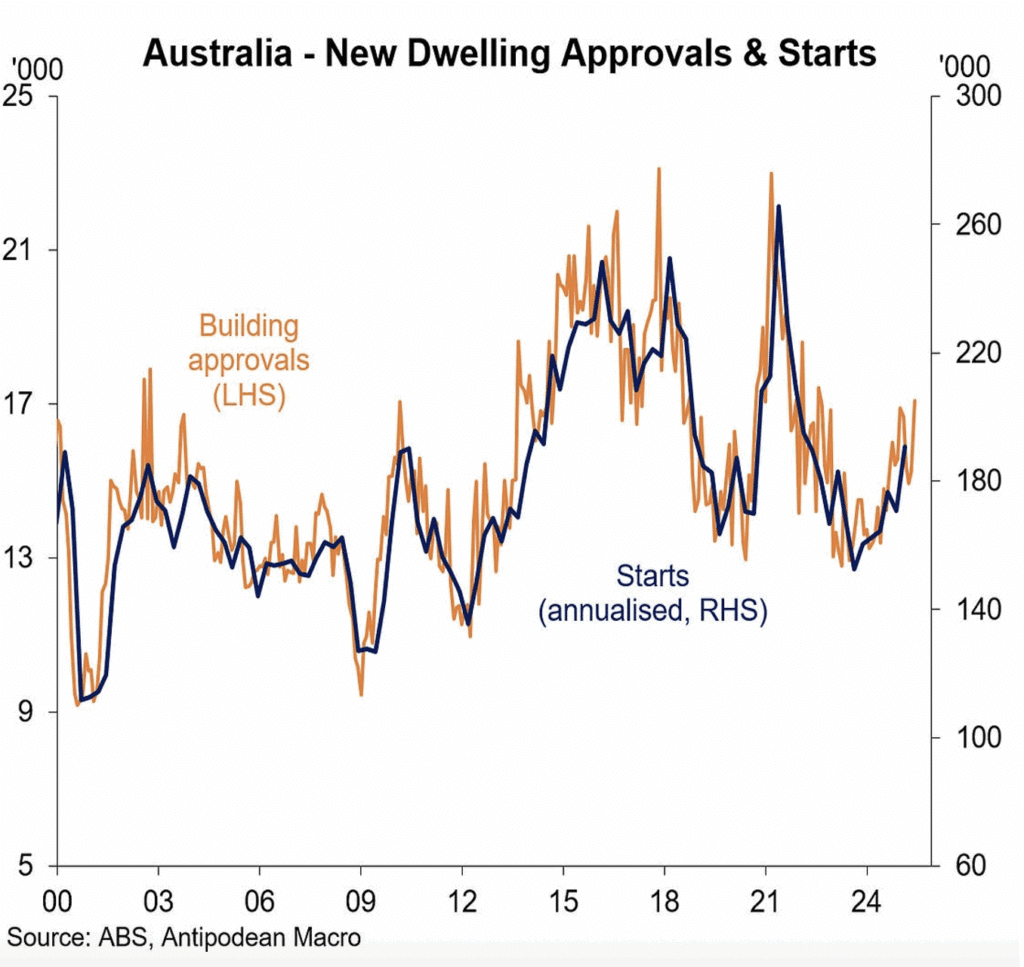
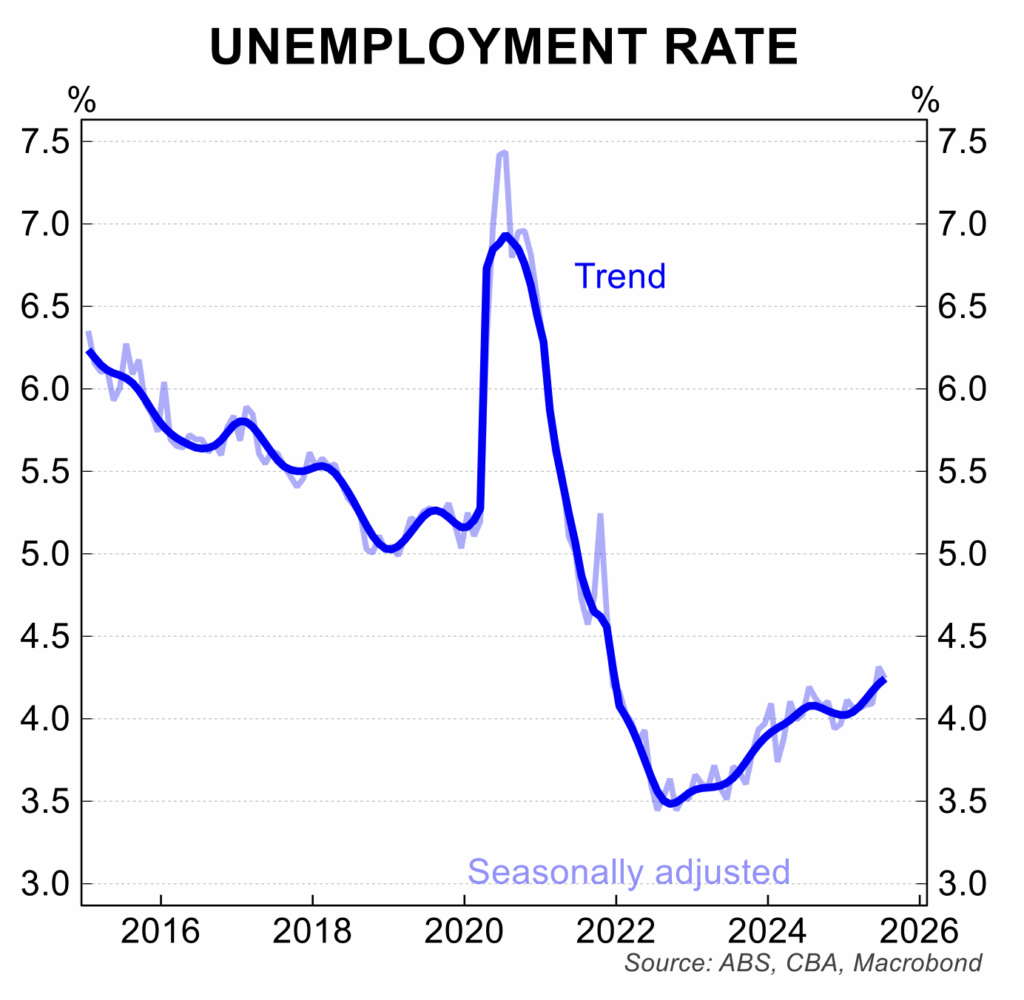
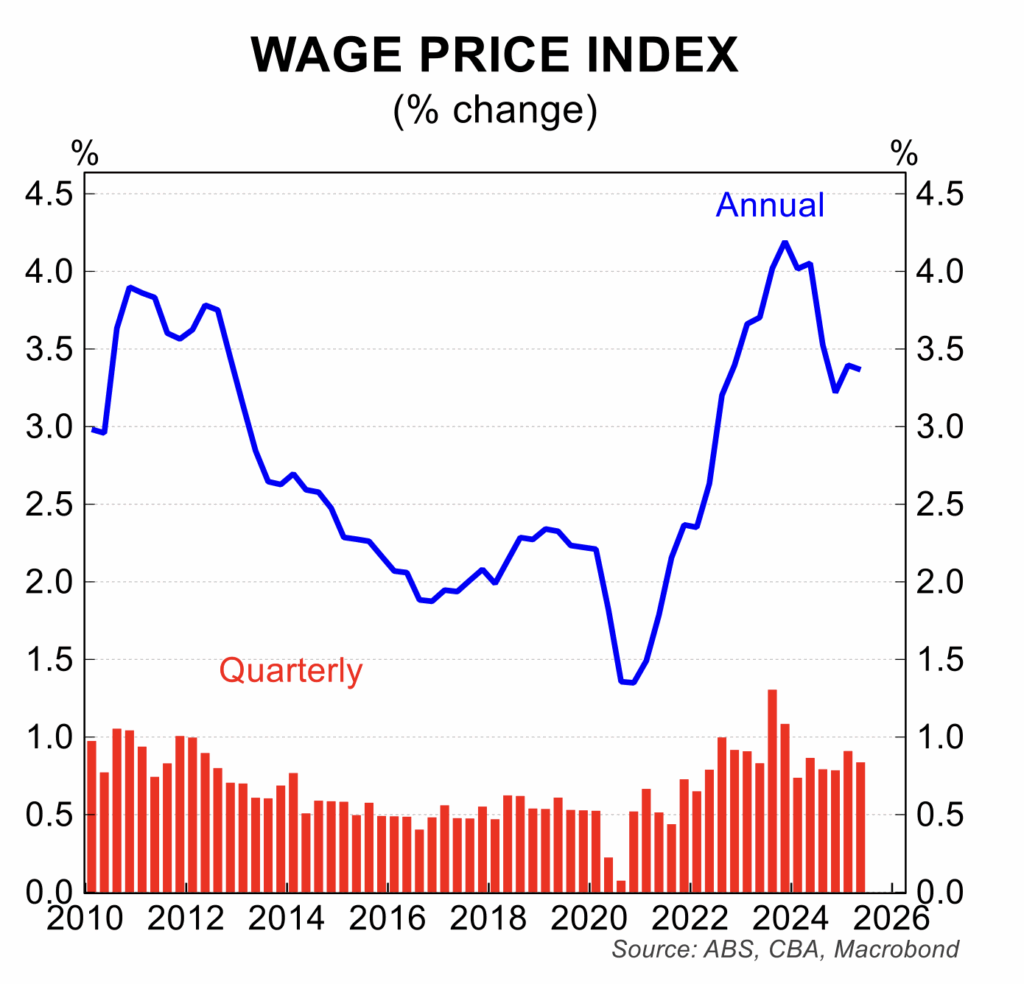
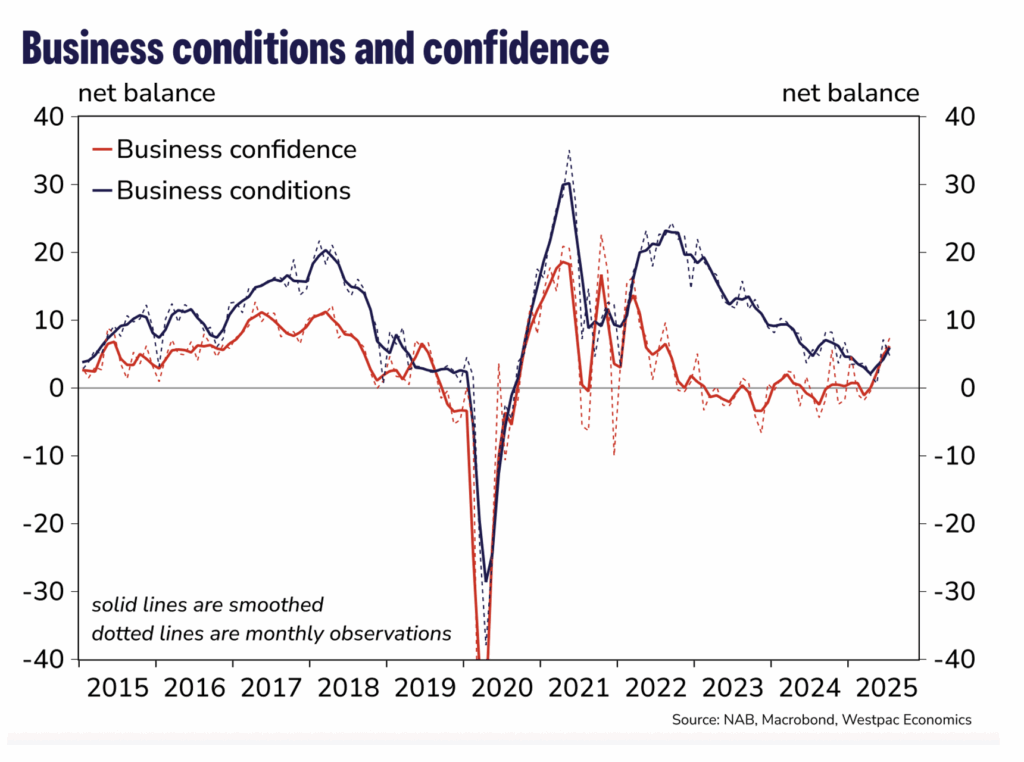
House prices
Nationwide house prices continue to pick up, rising 0.6 per cent in July following similar increases in the previous two months. It was the sixth consecutive monthly rise. That said, the lift in prices is, at this stage, relatively moderate with the price-positive issues of demand/supply and lower interest rates being countered to some extent by a softer labour market and pressured affordability.
As has been the case since the start of the year, the gains were broadly based – prices in all capital cities and in regional areas are increasing at a steady pace, with the ‘boom’ cities of Perth, Adelaide and Brisbane slowing, while the weaker cities including Melbourne, Hobart, Darwin and Sydney now recording growth.
The early indicators for August show further upside price momentum – the Cotality house price series is rising, auction clearance rates are buoyant and the rental vacancy rate remains low, pointing to further momentum in the rental market.
There are some risks to the housing market – a materially weaker labour market and a sharp rise in new listings adding to supply would present some offset to the positive effects of lower interest rates and on-going solid levels of immigration (Figure 8).

Stephen Koukoulas is Managing Director of Market Economics, having had 30 years as an economist in government, banking, financial markets and policy formulation. Stephen was Senior Economic Advisor to Prime Minister, Julia Gillard, worked in the Commonwealth Treasury and was the global head of economic research and strategy for TD Securities in London.


